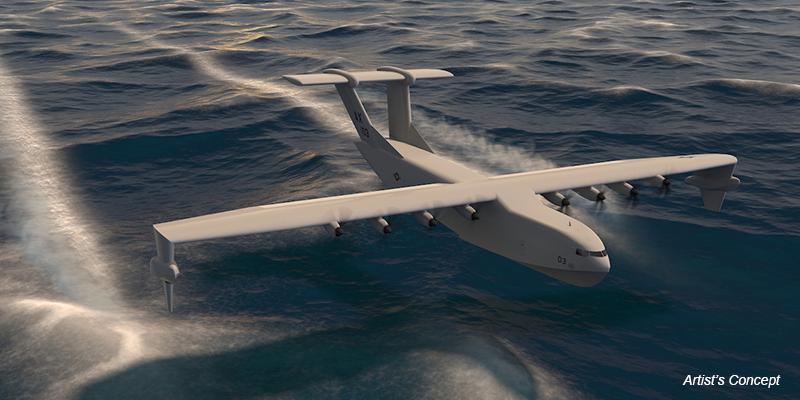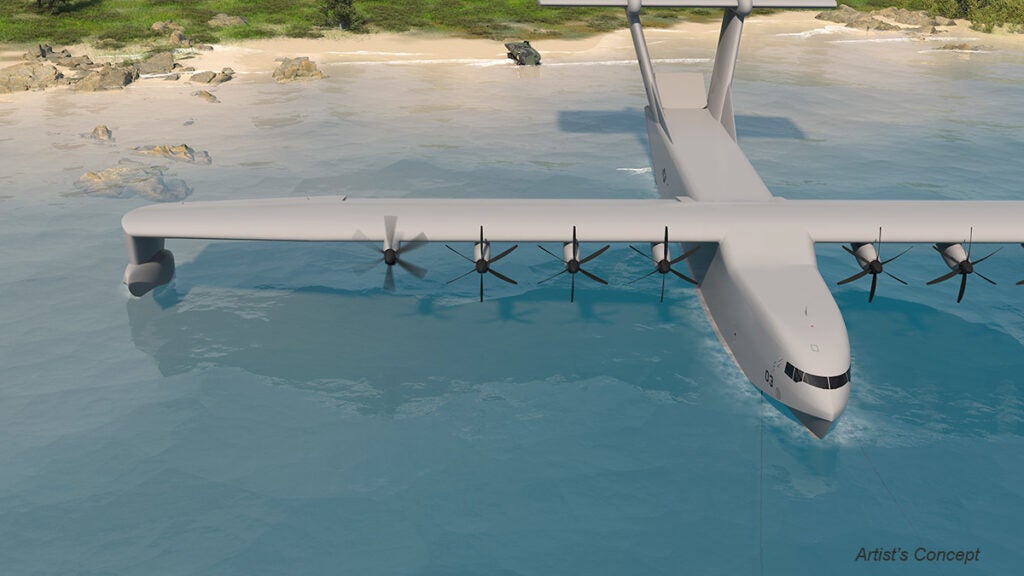Aurora Flight Sciences’ Liberty Lifter Concept Makes Test Progress
Aurora Flight Sciences has provided some details on the preliminary development progress of the concept aircraft it is building for Defense Advanced Research Projects Agency (DARPA) Liberty Lifter ground effect cargo aircraft program.
Aurora’s Liberty Lifter is currently in the preliminary design phase under the program’s Phase 1B, with the company focusing on risk reduction testing during the phase. Phase 1B will conclude with a preliminary design review currently scheduled for January 2025. If the program progresses, flight testing would occur in 2028.
Aurora shared renders of an updated configuration for its aircraft, with its tailplane configuration changed from a t-tail to a pi-tail, with the Boeing subsidiary saying the new design is more structurally efficient when accommodating an aft cargo door. The aircraft’s floats have been relocated from the side-sponsons to the vehicle’s wing tips, creating a better balance between vehicle affordability and performance in ground effect.

Oregon-based shipyard ReconCraft has partnered with Aurora to provide expertise in maritime manufacturing methods and will build full-scale structural test articles, including a portion of the fuselage. The Aurora team has also tested a scale model of the hull in the tow tank at Virginia Tech, which offers a unique capability to study the slamming of craft during landing.
Upcoming testing includes flying sensors and software for wave detection and prediction, which will feed data to the X-plane’s advanced control system for safe flight in ground effect over high sea states.
“Innovations often occur at intersections. Here, it’s the intersection of our maritime and aerospace teams,” said Dan Campbell, Aurora program manager. “For example, the intersection of maritime manufacturing with aerospace structural design, or the intersection of maritime wave forecasting with aerospace controls.”
Other team partners include naval architecture and marine engineering company Gibbs & Cox, as well as several advisors and engineers from Aurora’s parent company, Boeing. According to Aurora, its development process benefits from previous seaplane and flying boat research and development by Boeing.
Liberty Lifter seeks to evaluate the feasibility of a long-range heavy lift cargo aircraft utilizing ground effect to maximize its efficiency, with General Atomics also selected to develop a competing design.
The Soviet Union experimented with ground effect craft like the KM “Caspian Sea Monster” and the Lun-class ekranoplan (“screen glider”), but the designs evaluated ultimately proved impractical for mass adoption.

